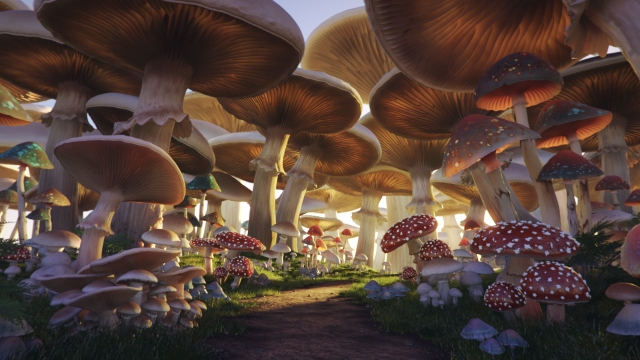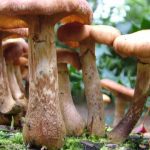
Mushroom growing is a fascinating and magical journey into the world of fungi. Whether you’re a novice enthusiast or an experienced gardener, cultivating mushrooms at home can be a rewarding and fulfilling endeavor. The allure of watching these mysterious organisms emerge from the earth, flourishing in their unique shapes and colors, is truly captivating. With a few simple steps and a touch of patience, you can unlock the secrets of mushroom cultivation and embark on your own fungi-filled adventure.
The beauty of mushroom growing lies not only in its aesthetic appeal but also in the incredible array of culinary possibilities it presents. Imagine adding freshly harvested mushrooms to your favorite pasta dish or incorporating them into a savory stir-fry. The flavor and texture of homegrown mushrooms can elevate any recipe to new heights, allowing you to savor a true farm-to-table experience right in your own kitchen.
But the benefits of mushroom growing extend far beyond the culinary realm. These remarkable organisms possess numerous medicinal properties, and many species are used in traditional medicine practices around the world. From boosting the immune system to promoting mental well-being, mushrooms have gained recognition as a natural source of healing and wellness. By cultivating your own mushrooms, you have the opportunity to harness their potent qualities and incorporate them into your holistic lifestyle.
Join us as we delve into the captivating world of mushroom growing, uncovering the secrets of successful cultivation, exploring different species, and discovering the myriad benefits that these humble fungi have to offer. Whether you’re seeking a fulfilling hobby, a sustainable food source, or simply a newfound appreciation for the wonders of nature, mushroom growing is an adventure you won’t want to miss. So grab your spores, roll up your sleeves, and let’s unleash the magic of mushroom cultivation together.
Choosing the Right Mushroom Varieties
When it comes to mushroom growing, selecting the right varieties is essential. Each mushroom species has its own unique requirements and characteristics, so it’s important to choose ones that align with your goals and resources. Here are some factors to consider when picking the perfect mushroom varieties for your cultivation venture.
- Growth Medium Compatibility
Different mushroom species have specific preferences for their growth mediums. Some mushrooms thrive on composted materials such as straw or sawdust, while others prefer hardwood logs or even coffee grounds. By understanding the growth medium requirements of your desired mushroom varieties, you can ensure that you provide them with the perfect environment to flourish.
- Climate and Environmental Conditions
Mushroom cultivation success also depends on creating the right climate and environmental conditions. Certain mushroom species prefer cool and humid environments, whereas others thrive in warmer temperatures. Additionally, some mushrooms require a specific amount of light, while others prefer darkness. By selecting mushroom varieties that match the climate and environmental conditions you can provide, you increase the chances of a fruitful harvest.
- Market Demand and Personal Preference
Consider the market demand and your personal preference when deciding on mushroom varieties to grow. Some mushrooms, such as the crimini or shiitake, have high demand in the culinary industry. Others, like the oyster mushroom, are popular for their medicinal properties. Assessing the profitability and personal interest in specific mushroom varieties can help you make an informed decision and ensure a successful venture.
By taking into account factors such as growth medium compatibility, climate and environmental conditions, as well as market demand and personal preference, you can choose the right mushroom varieties for your growing operation. As you venture into the world of mushroom cultivation, remember that each variety has its own character and needs – but with the right approach, you’ll unlock the magic of mushroom growing.
Setting Up a Mushroom Growing Environment
When it comes to mushroom growing, creating the right environment is crucial for success. The conditions in which mushrooms grow can greatly affect their development and overall yield. In this section, we will discuss the key elements to consider when setting up a mushroom growing environment.
Temperature plays a vital role in mushroom cultivation. Different types of mushrooms have different temperature requirements, so it’s important to research the optimum temperature range for the specific variety you are growing. Generally, mushrooms thrive in temperatures ranging from 55 to 65 degrees Fahrenheit (13 to 18 degrees Celsius), but this can vary. Maintaining a consistent temperature within the desired range is essential for healthy mushroom growth.
Humidity is another crucial factor to control in a mushroom growing environment. Mushrooms require high humidity levels to develop and grow properly. Typically, a humidity level of around 90% is recommended during the initial stages of mushroom growth. This can be achieved by misting the growing area with water or by using a humidifier. As the mushrooms mature, the humidity can be gradually reduced to prevent excessive moisture and the growth of unwanted fungi.
Lighting is often a misunderstood aspect of mushroom cultivation. Unlike plants, mushrooms do not require direct sunlight for photosynthesis. In fact, exposure to direct sunlight can be harmful to their growth. Mushrooms prefer indirect or diffused light. A low-intensity light source, such as fluorescent lights, can provide the necessary illumination without causing any harm. Keeping the lighting schedule consistent, generally around 12 hours of light per day, is beneficial for maintaining healthy mushroom growth.
By paying attention to the temperature, humidity, and lighting conditions, you can create an optimal environment for mushroom growing. In the next section, we will explore the process of inoculating the growing substrate with mushroom spawn, a critical step in the cultivation journey.
Tips for Successful Mushroom Cultivation
- Proper Sterilization Techniques:
How To Grow Psilocybe Cubensis
Sterilization is a crucial step in mushroom cultivation to ensure the growth of healthy and robust mushrooms. Make sure to sanitize all equipment and the growing environment thoroughly. Cleanliness is key to prevent contamination and unwanted fungi from competing with your desired mushroom species. Regularly disinfect tools, containers, and surfaces with a suitable sterilizing agent to maintain a sterile environment for optimal mushroom growth.
- Optimal Temperature and Humidity:
Mushrooms thrive under specific temperature and humidity conditions, which vary depending on the species you are cultivating. It is essential to research and understand the ideal environmental requirements for your chosen mushroom variety. Maintaining a stable and controlled temperature within the designated range will encourage proper mycelium growth and fruiting. Additionally, to ensure adequate moisture levels, mist the growing area regularly or use a humidity controller to provide the necessary humidity levels for successful mushroom cultivation.
- Quality Substrate Selection:
The choice of substrate greatly influences the success of mushroom growing. Different mushroom species have different substrate preferences. Determine the appropriate substrate for your selected mushroom by researching its specific requirements. Common substrates include straw, wood chips, sawdust, or a combination of these materials. Ensure the substrate is properly prepared, sterilized, and balanced in terms of moisture content before adding the mushroom spores or spawn. This will create the ideal environment for mycelium colonization and fruiting.
Remember, successful mushroom cultivation requires patience, attention to detail, and a willingness to learn from any setbacks. By following these tips and staying committed to the process, you can unleash the magic of mushroom growing and enjoy the rewards of a bountiful harvest.


